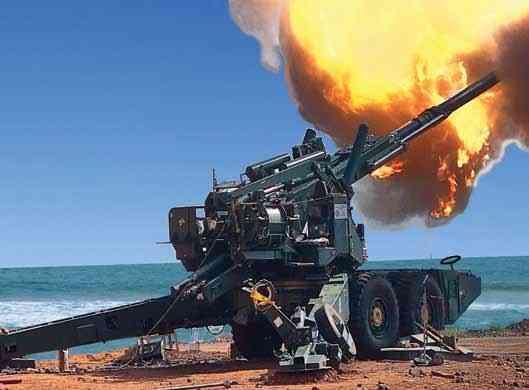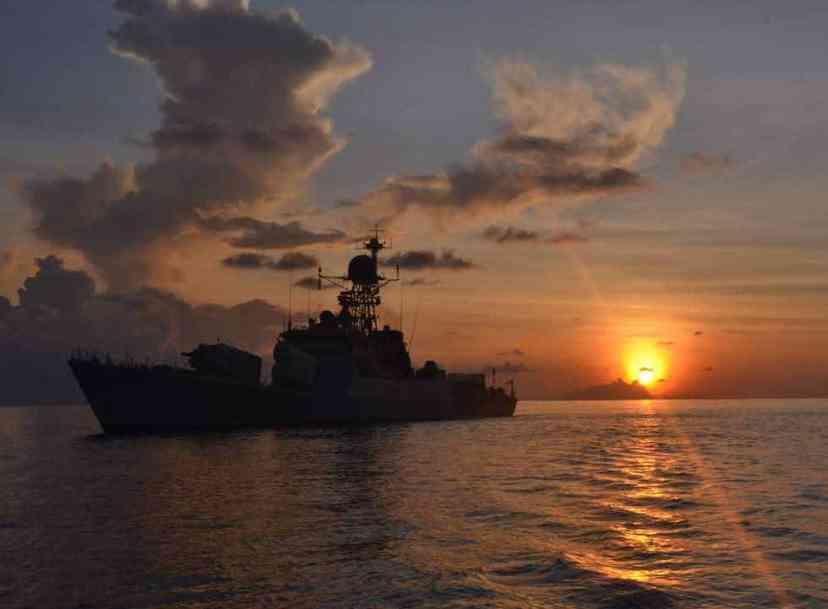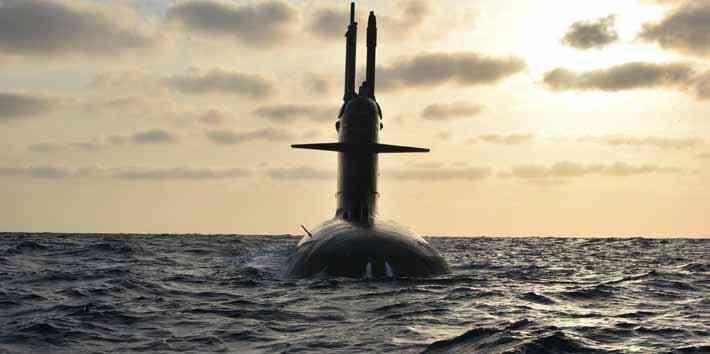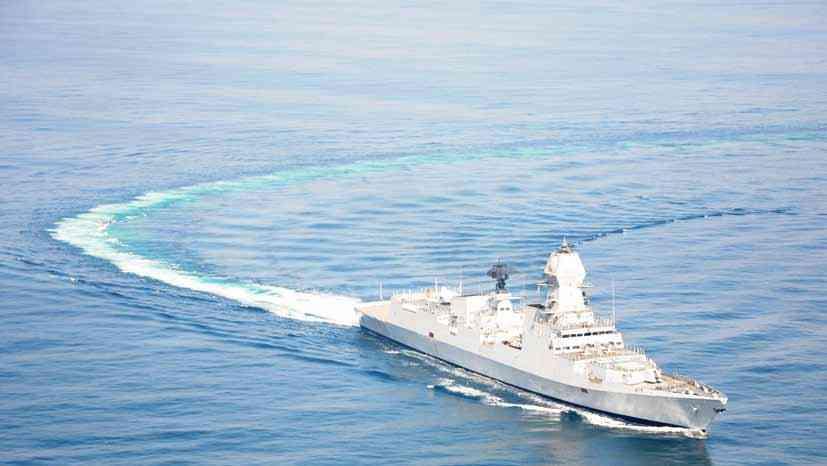
7 minute read
Indian Navy: Charting a new course
hi-tech civilian products. As a result, the defence deals between India and Russia are set to cross US Dollars 16 billion. The deals include the supply of S-400 air defence systems and the production of Kalashnikov rifles and Kamov helicopters.
Rosoboronexport, Russia’s state-run organization, has signed deals with DRDO for advanced pyrotechnic ignition systems, HAL for the export of spares and services to allies, and BHEL for land systems. Another deal was signed between Russian Helicopters and Indo-Russian Helicopters Ltd to localise the components used in Kamov Ka-226 helicopters. India is planning to purchase 200 Ka-226 helicopters.
Advertisement
Self-reliance in defence
Defence Minister Rajnath Singh, in a series of tweets, made the major announcement of giving a boost to the indigenization of India’s defence industry. “The Ministry of Defence is now ready for a big push to #AtmanirbharBharat initiative. MoD will introduce an import embargo on 101 items beyond the given timeline to boost indigenisation of defence production,” he said.
Subsequently, MoD prepared a list of 101 items for which there would be an embargo on the import beyond the timeline indicated against them. “This decision will offer a great opportunity to the Indian defence industry to manufacture the items in the negative list by using their own design and development capabilities or adopting the technologies designed & developed by DRDO to meet the requirements of the Armed Forces,” the Minister added. “Our aim is to apprise the Indian defence industry about the anticipated requirements of the Armed Forces so that they are better prepared to realise the goal of indigenisation. All necessary steps would be taken to ensure that timelines for production of equipment as per the Negative Import List are met, which will include a co-ordinated mechanism for hand holding of the industry by the Defence Services,” he tweeted.
Earlier, Finance Minister Nirmala Sitharaman had announced that the FDI limit in defence manufacturing under automatic route will be hiked to 74 per cent from the existing 49 per cent while some weapons and platforms will be banned for imports. The Finance Minister also said that Ordnance Factory Board will be corporatised for better management. Similarly, Prime Minister Narendra Modi has set a target of US Dollars 5 billion worth of military exports in the next five years. Following the Prime Minister’s call for going local, MoD released the draft Defence Acquisition Procedure-2020.
All these programmes are expected to change India’s status as the world’s second-largest arms importer to a nation that boasts of a thriving domestic defence industry.

Indian Navy: Charting
Over the years,
The Indian Navy is engaged in efforts to have a fleet of at least 150 ships and around 500 aircraft. This would enable the Navy to not only secure both sea flanks in the Bay of Bengal and the Arabian Sea but also respond to emergency situations far away from the mainland.
The latest initiatives of the Indian Navy include enhancing the marine assault capabilities by setting up a new amphibious warfare facility at Kakinada in Andhra Pradesh. The Navy has also initiated Phase II expansion of INS Kadamba, its third largest naval base, near Karwar. This phase will involve expansion of the berthing facilities to accommodate 40–45 more front-line warships, including the aircraft carrier INS Vikramaditya, raise manpower to 300 officers and around 2,500 sailors, and build a naval air station with a 6,000-foot runway. After Phase II is over, Phase IIA and IIB will follow. When all the works are completed, INS Kadamba will be able to base 50 front-line warships. Meanwhile, construction of a new naval base, INS Varsha,
a new course
at Rambilli for Arihant Class submarines is underway.
Yet another major initiative is building a pair of aircraft carriers. The first carrier, INS Vikrant, was launched in 2013 by Cochin Shipyard and undocked in June 2015. After completing the works, extensive sea trials would be carried out and commissioning is planned for 2021. Vikrant, which has a displacement of 40,000 tonnes, will be capable of operating up to 40 aircraft, including 30 HAL Tejas and MiG-29K fighters. The second aircraft carrier, INS Vishal, will displace around 65,000 tonnes and is expected to be delivered to the Indian Navy by the late 2030s. After Vishal is delivered, the Indian Navy’s target of having three aircraft carriers in service would be achieved.
Over the years, India’s Defence Acquisition Council has been launching numerous programmes to modernize the Navy. In addition to aircraft carriers and large amphibious assault ships, the Indian Navy is acquiring numerous surface combatants such as; the Visakhapatnamclass destroyers, Project 17A-class and Admiral Grigorovich-class frigates, ASW shallow water corvettes, ASuW corvettes, and MCM vessels. New submarine types include the conventional Kalvari class, Project 75I and the nuclear Arihant class. New auxiliary ships include five Replenishment Oilers, a Missile Range Instrumentation Ship and an Ocean Surveillance Ship.
As part of enhancing its technological capabilities,
Admiral Karambir Singh
PVSM, AVSM, ADC Chief of the Naval Staff

the Indian Navy is procuring General Atomics Sea Guardian drones at an estimated cost of US Dollars 2 billion. It is pointed out that this is for the first time that drones built by General Atomics are sold to a non-NATO nation.
In yet another first in the history of Indian naval aviation, two women officers have been selected to join as ‘Observers’ (Airborne Tacticians) in the helicopter stream. They would, in effect, be the first set of women airborne combatants who would be operating from warships. Earlier, entry of women was restricted to the fixed wing aircraft that took off and landed ashore. These officers, SLt Kumudini Tyagi and SLt Riti Singh, are a part of a group of 17 officers of the Indian Navy, including four women officers and three officers of the Indian Coast Guard who were awarded ‘Wings’ on graduating as ‘Observers’ at a ceremony held at INS Garuda,
Kochi. After being trained in helicopter operations, women officers would soon be deployed in frontline warships of Indian Navy.
NIIO launched
Meanwhile, Defence Minister of India Rajnath Singh launched the Naval Innovation and Indigenisation Organisation (NIIO) through an online webinar. Chief Minister of Uttar Pradesh Yogi Adityanath was among the dignitaries present at the event. The NIIO has set up dedicated structures for the end users to interact with academia and industry with the aim of fostering innovation and indigenisation for self-reliance in defence, sticking to the vision of Atmanirbhar Bharat.
The NIIO is a threetiered organisation. Naval Technology Acceleration Council (N-TAC) will bring together the twin aspects of innovation and indigenisation and provide apex level


directives. A working group under the N-TAC will implement the projects. In addition, a Technology Development Acceleration Cell (TDAC) has been created for induction of emerging disruptive technology in an accelerated time frame.
The Draft Defence Acquisition Policy 2020 (DAP 20) envisages Service Headquarters establishing an Innovation & Indigenisation Organisation within existing resources. Indian Navy already has a functional Directorate of Indigenisation (DoI) and the new structures created will build upon the ongoing indigenisation initiatives, as well as focus on innovation.
During the launch event, the Indian Navy signed Memorandums of Understanding (MoUs) with Uttar Pradesh Expressway Industrial Development Authority (UPEIDA); Raksha Shakti University (RSU), Gujarat; Maker Village, Kochi and Society of Indian Defence


Manufacturers (SIDM). An online discussion forum for engaging domestic industry and academic institutes has also been launched created in partnership with RSU. A compendium of Indian Navy’s Indigenisation perspective plans titled ‘Swavlamban’ was also released.
The Indian Navy has also tapped solar power as part of its modernization. Towards this end, the Flag Officer Commandingin-Chief, Southern Naval Command commissioned a 3 MW Solar Power Plant at Indian Naval Academy (INA), Ezhimala, Kerala via virtual conferencing. This is in line with the Government of India initiative of ‘National Solar Mission’ to achieve 100 GW of solar power by 2022.
The solar plant is the largest in the Indian Navy and has an estimated life of 25 years. All components have been indigenously sourced, including 9180 highly efficient monocrystalline solar panels employing the latest technology. The project has been executed by Kerala State Electronics Development Corporation Ltd. The Solar Power Plant project will help Naval Station Ezhimala in reducing the carbon footprint and is one of the many initiatives undertaken by INA towards a clean and green environment.












